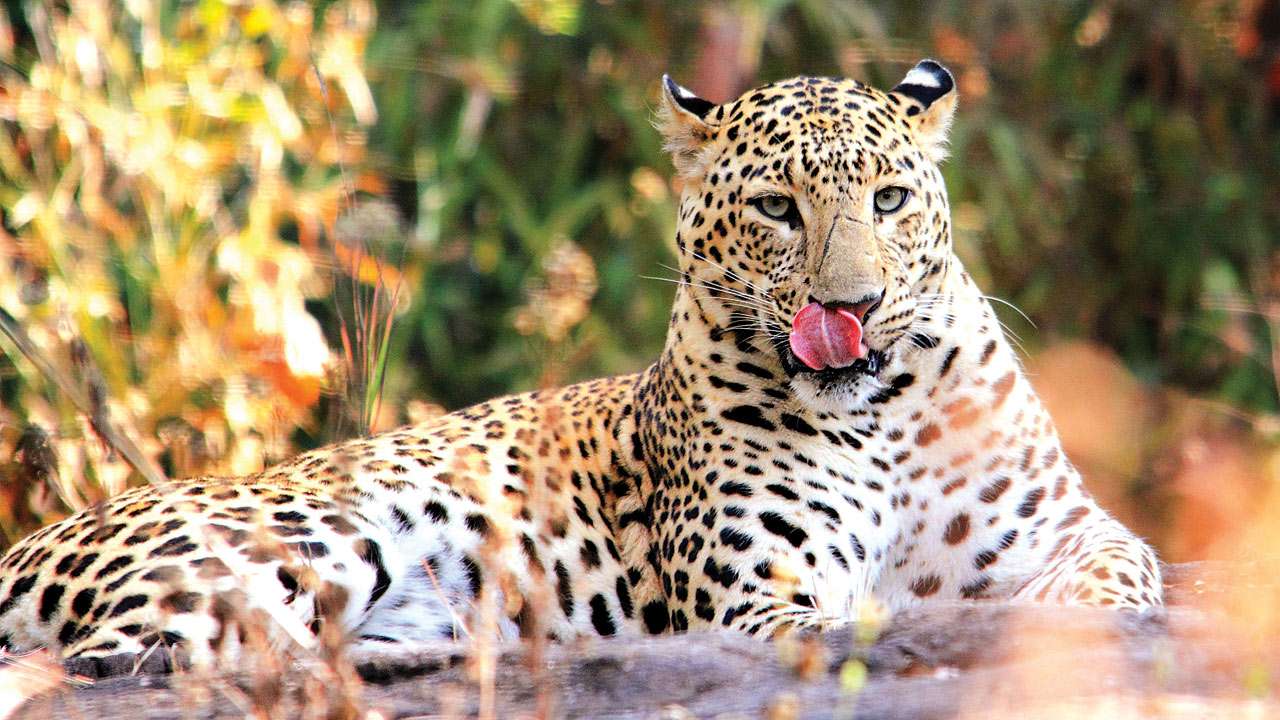
Strength, agility, intelligence and ability to survive in practically all types of terrestrial ecosystems make cats one of the most successful predators. Out of the 36 species of wild cats in the world, 15 are found in India, occupying a variety of natural habitats and human-dominated landscapes. While India’s large cats — Bengal Tiger, Asiatic Lion, Common Leopard, Snow Leopard and Clouded Leopard — are more popular, very little is known about the ecology and distribution of the 10 species of smaller cats: Asian Golden Cat, Marbled Cat, Caracal, Asiatic Wildcat, Eurasian Lynx, Pallas’s Cat, Jungle Cat, Leopard Cat, Fishing Cat and, the smallest of all wild cats of the world, the Rusty Spotted Cat. Cheetah, yet another species of cat, became extinct from India in the early 1950s due to unnatural causes. All cat species are protected and placed in Schedule I of the Wildlife (Protection) Act, 1972, except the Jungle Cat, which is placed in Schedule II.
India’s flagship project — the Project Tiger, covering 50 tiger reserves spreading over 72,000 sq km area — has been instrumental in offering protection to tigers along with the other species of wild cats that coexist with the tigers.
Although the tiger reserves are well protected, most of their connecting habitats may not be within the legal domain of Protected Areas (PA) and are often compromised to the growing developmental demands and ever-increasing anthropogenic pressures. Being territorial and having restricted sacrosanct forests, tigers try to explore newer areas that are adjacent to the tiger reserves and put themselves at the risk of being in human-dominated landscapes.
Humans often encounter them due to their dependence on forests for natural resources collection and cattle grazing. Though a rare occurrence, attacks by large cats on humans too cannot be ruled out in such areas, mostly as chance encounters and rarely as deliberate predation. Such incidences, if not controlled, and the causes for such attacks, if not addressed timely, might lead to an increase in human-tiger conflict incidences as was seen last month in the cases of T1 tigress in Maharashtra and killing of a tiger under a tractor by an irate mob in Dudhwa, Uttar Pradesh.
Unfortunately, the beauty of the wild makes them vulnerable to global illegal wildlife trade. Between 1994 and 2018, a total of 1,178 tigers and 4,698 leopards had been killed by poachers. These are reported cases and we cannot rule out the possibility of more animals being actually dead due to poaching, retaliatory killings, electrocution and carcass poisoning. India’s tiger reserves act as “breeding centres” and the connecting corridor and non-PA forests, where wildlife conservation is unfortunately not a priority, may well be poachers’ paradise. Out of the 96 tiger deaths in 2018, 46 deaths have occurred outside tiger reserves and reasons for most of these deaths is yet unknown.
Around 1,200 wildlife poaching cases were registered in various states between 2015 and 2018, but conviction took place in only 10 per cent of the cases. Capacity-building and motivation of the enforcement agencies is necessary to prevent poaching and to ensure a higher conviction rate in poaching cases. Leopards suffer a far greater mortality at the hands of poachers and in conflict with people. It is time for India to seriously think about a ‘Project Leopard’ with emphasis on mitigating human-leopard conflict.
Asiatic Lions are globally restricted only to the Asiatic Lion Landscape spread over 20,000 sq km in the Saurashtra region of Gujarat. Although lions outside Gir Protected Area survive mostly on livestock, the local people have so far shown remarkable tolerance towards livestock depredation. However, every habitat has its carrying capacity and tolerance has its limits. Being in human-dominated landscapes exposes large cats to Canine Distemper Virus (CDV), which is mostly spread through feral dogs. Recent deaths of lions in Gujarat were attributed to CDV, which was also responsible for an epidemic in the Serengeti region of Africa, where 1,000 African Lions died in three weeks. Therefore, it is important to have alternative population of lions elsewhere in Gujarat and other states for the long-term survival of this species.
Many of the smaller cats are mostly nocturnal and occasional camera trap images are possibly the only records of their occurrences. The nocturnal nature of these cats — perhaps a survival strategy adopted to avoid humans — makes them very difficult to observe and study. Asian Golden Cat and Marbled Cat are denizens of dense forests in the northeast; Caracal, Asiatic Wildcat, Leopard Cat and Jungle Cat prefer grasslands, scrublands and forests in western, northwestern and central India; Fishing Cat prefers mangroves and wetlands; Snow Leopard, Pallas’s Cat and Eurasian Lynx survive in the high altitude Himalayas; and Rusty Spotted Cat also survives in human-dominated landscapes in addition to PAs. All these habitats are subjected to severe pressures of hunting by local communities, poaching mafias, habitat loss and fragmentation. Many grasslands in India are categorised as ‘Revenue Wastelands’, thus compromising their sanctity as important ecological units that need protection. The Northeast region needs special attention to address the severe hunting and poaching pressures.
India’s wild cat conservation needs a holistic approach with habitat management of natural as well as man-made ecosystems.
Author is director of The Corbett Foundation